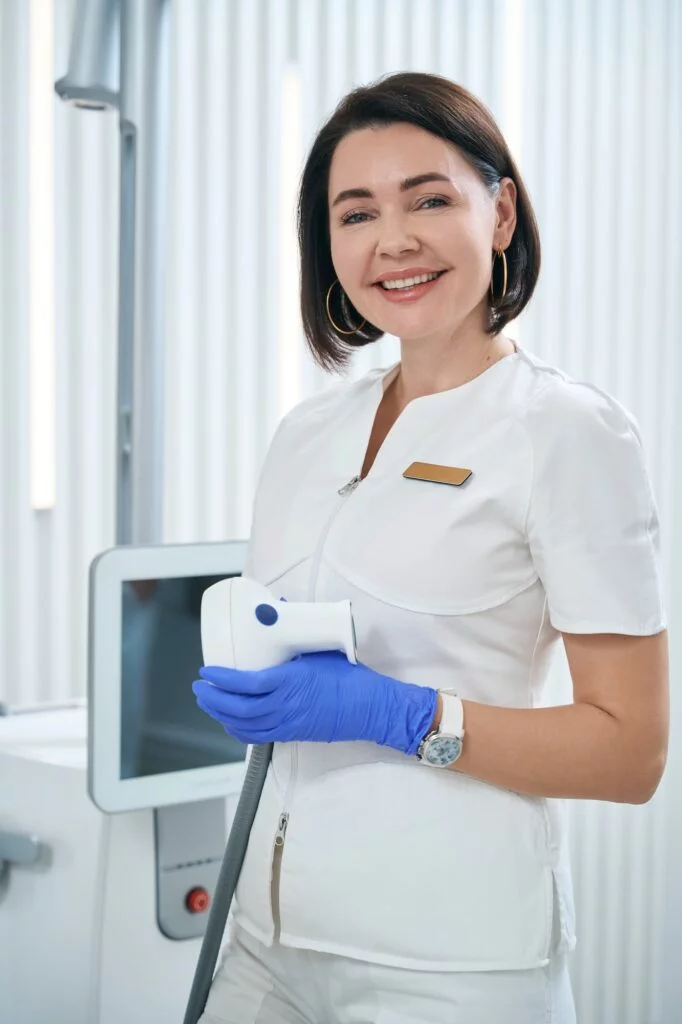A flexible sigmoidoscopy procedure, also called “flex sig,” is an alternative to a colonoscopy. This test is used to examine the lower part of the colon (large intestine) rather than the entire colon, as a colonoscopy does.
A flex sig doesn’t usually require as much preparation as a colonoscopy does, and it’s a bit more targeted in its focus. Let’s talk about why your gastroenterologist may recommend that you have a flex sig procedure, whether it requires any kind of anesthesia, and where you can go throughout California for outstanding digestive care and to keep your colon healthy.
What Is the Flex Sig Procedure?
Flexible sigmoidoscopy is a minimally invasive procedure that involves your gastroenterologist inserting a sigmoidoscope – which is a long, thin tube with a light and camera function at the end – into your anal orifice. The gastrointestinal (GI) doctor uses the sigmoidoscope to examine the condition of your large intestine in the lower colon, or sigmoid and rectum. The GI doctor also pumps air through the tube, expanding your colon in order to get a better view of the area.
The GI physician may use specialized instruments to obtain a small tissue sample (biopsy) if needed. The sample will undergo laboratory screening for diseases such as colon cancer or inflammation of the colon.
This diagnostic exam is an outpatient procedure, which means you can go home right away afterward. It takes around 15–30 minutes for your GI doctor to perform a flexible sigmoidoscopy.
The GI specialist may recommend a flex sig procedure if you experience:
- Pain in the abdomen
- Bleeding in the rectum
- Blood in the stool
- Diarrhea that is persistent
- Unknown cause of weight loss
Does the Flex Sig Procedure Involve Anesthesia?
Most of the time, a flex sig procedure does not require anesthesia or other sedatives, because it is almost noninvasive. You may experience some minor discomfort during the procedure, which is usually described as feeling like you are about to have a bowel movement. You may also feel muscle spasms or occasional minor stings in the belly area.
Depending on the results, your GI doctor may recommend that you undergo a colonoscopy to examine your colon fully. The gastroenterologist can remove any polyps that are found during a flex sig, but polyps usually indicate more polyps further up in the colon – which will need to be removed in a colonoscopy, because they can be precancerous. Removing colon polyps can indeed prevent colon cancer, because the polyps never become cancerous if they are gone.
Is There an Option for Sedation?
Although anesthesia isn’t necessary, you may request it, or your doctor may recommend it to help you be more relaxed and comfortable. If you do receive sedation, you will likely receive “twilight” sedation, where you are somewhat conscious. This type of sedative wears off more quickly than deeper sedatives.
If you do opt for sedation, you will need to have a known friend or relative (not an Uber or Taxi) drive you home.
Flex Sig Procedure Throughout California
If you are experiencing digestive problems, our team of experienced gastroenterologists at Genensis Healthcare Partners can address your gastrointestinal issues. We are the largest gastroenterology group in California, and we are committed to providing patient-centered care in a private practice setting.
We offer various gastroenterology services, including the flex sig procedure and the colonoscopy. If you’re looking for a skilled gastroenterologist in the Berkeley and San Pablo area, Dr. Mark Kogan is here for you.
If you have any questions or would like to schedule a consultation, call us at our location nearest you or fill out our online appointment request form. We look forward to serving you!



